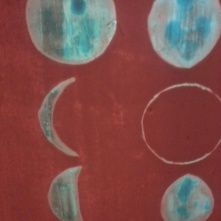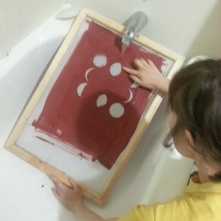Pender, Kelly. Techne: From Neoclassicism to Postmodernism: Understanding Writing as a Useful, Teachable Art. Parlor Press 2011.
- relationship between techne and the development of rhetoric and composition as an academic discipline in the mid-twentieth century the influence of postmodern theory on that development what we don’t often teach/don’t teach under the rubric of “writing” in contemporary comp courses (3)
- defending techne as a way to understand and teach writing
- from Greek tekhne – no approximate in English, so likened to art, skill, and craft – but none of these embrace the whole complex structure, so when we use any of these, it is only a part
- art-fine art
- craft-more utilitarian
- created confusion in the circulation of art in the rhetoric community
- what connects techne to art, skill, or craft?
- all a process of making – producing
- poeisis – the act of bringing something into being; techne is a form of poeisis that follows a course of reasoning (one that can be studied, systematized and taught), has its origin in a maker (work toward something knowable), is concerned with things that can either be or not be (to locate in a world of contingent), and locates its end outside of the process of making in the use of the thing made (in a category of activities that are meant to accomplish something in the world) (5)
- the base techne served in establishing research and legitimacy to the growing field of rhetoric and composition – a sturdy but narrow foundation (6-7)
- composite definitions of techne:
- techne as a “how-to” guide or handbook: absence of theoretical discussion is primary deficiency; serves as a technique to be applied or examples to be mimicked – not addressing what causes rhetorical success and failure (17)
- techne as a rational ability to effect a useful result – a state of capacity to make; end of techne is instrumentally valuable in the use made of its product (21)
- techne as a means of inventing new social possibilities – capacity to challenge status quo “mark the shifting and contestable borders of what is possible” (qtd. Atwill 27). makes techne situational (agile practitioners in situation, bodily implications less strict)
- techne as a means of producing resources – production never ends; every product becomes means for another round of production (31); risk of mere instrumentality (utility and usefulness become standards of judgment) – technology driven (making things with tools in opposition with the natural)
- techne as a non-instrumental mode of bringing-forth – bringing forth of something from concealment to unconcealment; doesn’t fall on opposite end of the spectrum as fine art (35)
- techne’s prominent and problematic features: its association with instrumentality and its emphasis on teachability – “And what happened once they began pointing out how theories of writing that privilege it teachable dimensions, which is to say its rational dimensions, often ignore its non-rational, material dimensions? (10)
- “After all, if I want to establish techne’s value as theory and pedagogy of writing, then I need to demonstrate that it is not the semantic equivalent of an inkblot” rhetoric rorschach test (14)
- definitions of techne exist on two continua: epistemological – definitions of techne establish different criteria for what kinds of knowledge can count as technical knowledge and axiological – the end of a particular techne always resides in the use of its products, not in the activity of producing them (15)
- techne as a decontextualizing form of knowledge (20)
- techne | knack (22-24)
- “the artist’s ability to make universal judgments that allows her to take a specific situation into account” (25)
- results as valuable as products (stable materials) or conditions (unstable materials)
- taking the situation into account requires the ability to modify one’s plans for achieving a part. end, but also the ability to redefine that ed as the situation dictates (26)
- maker | user exchange (bottom of 27)
- new social possibilities from an exchange of power or of cultural critique (27)
- techne as delusion or deception
- subversion
- experiential knowledge in terms of street smarts (not embodied knowledge) – lived experience that allows you to get around in the world how it circulates, what we value, economy of knowledge
- techne as dangerous to social order (28, Greeks)
- dolie techne “trap art” (28)
- embodied knowledge to respond to kairos (29) – ability to recoginize oprtune moment ingrained in being and body
- techne creates opportunities for cultural critique by making tacit social practices explicit (qtd. Atwill and Lauer 30)
- “when a boundary between insider and outsider is marked-when agents who have not been socialized into the practices of certain rhetorical situations must learn by art what those who have been in those situations have done by habit” (qtd. Atwill 30)
- only when practices are made explicit to teachable strategies can values, subjectivities, and ideologies that operate within them can be examined/critiqued and then revised or replaced to better (30) – otherwise conditions continue to appear natural “immutable structures of reality and truth” instead of particular constructions (31)
- frankfurt school: issues of reproducibility
- “man the user” (33): solution to problem by shifting attention from utility to user (but problem: maker is lost; gets swept up in capitalism) – at industrial scale
- techne ussually pitted against nature/ntural world
- telos: predetermined end (other three cause: material, efficient, and formal)
- coresponsibility of four causes ditinguishes techne from instrumentality
- post-techne (Hawk): writers are embedded elements of complex situations who work through the power of embeddeness to work with nature (not independently working on it) (37)
From Derek’s blog on Bogost’s “Carpentry” and our reading discussion series:
“[W]hy do you write instead of doing something else, like filmmaking or macrame or sumi-e or welding or papercraft or gardening?” In this context (and in this contrastive framing), writing is something of an attention or activity hog. It gets overplayed in the liberal arts; it gets over-valued in exceedingly strict economies for tenure and promotion. According to the chapter, these are cause for concern because 1) “academics aren’t even good writers” (89), and 2) writing, “because it is only one form of being” (90) is too monolithic a way of relating to the world. I generally agree with Bogost’s argument that scholarly activity should be (carefully!) opened up to include other kinds of making, but I’m less convinced that the widespread privileging of writing is the culprit here. It’s fine to say that academics aren’t good writers (though I’m reminded that we should never talk about writing as poor or problematic without looking at a specific text/unit in hand), but why would they be any better at “filmmaking or macrame or sumi-e or welding or papercraft or gardening” or coding APIs? So while I’m interested in the call for an expansion of what can be considered scholarly activity, it remains unclear to me why writing should be at odds or brushed aside with that expansion. Instead of “Why do you write instead of doing something else?”, I would rather consider “How is your writing and making and doing entangled?”
- Is this where Hawk’s post-techne (post-humanism) comes into vision – the entanglement? Hawk isn’t OOO (is he?), so what does it mean for invention to view people at he level of other materials for techne?
- what is available as material?
- that the materials may lead to invention (working in an opposite direction to a traditional approach of writing in which writer defines and responds to situation systematically/accordingly)
- closing down vs. opening up
- sophistry (122)
- narrow view of techne reduces it to teachability too narrowly and ignores some of its most important defining features – dependence on time, circumstance, experience, the contingencies of human interaction, and the situational potential of rhetorical ecologies (123)
- offical aritsotle: meand and ends are distinct, and its the end that’s valuable – not the means
- “The official version of techne we are left with then is one in which the artist devises, initiates, and controls the changes that will turn the presumably inert materials into a predictable final product”
- product of art happen in their own accord (130) – collapses divide between art and nature
- activity a strategic detour (131) – diminishes impact on the process of making (131)
- does techne not work because of its history? what would be the consequence of reterming? same impact as techne? – Pender is defending the term: instrumentality and teachability it posesses
- closing down vs. opening up (140)
- teaching writing as writing (140) as a techne, which is a form of poesis – productive knowledge that engages its user in the process of making
- “writing both locates us on the threshold between the known and unknown and intensifies our experience of being here” (141)
- creative writing, invention as “archeological topos” – a course in metawriting
- “Historically, we have valued techne because it focuses our attention to external goals; or to put it more precisely, we have valued techne because it allows us to align writing with particular external goals” – techne as a bringing forth allows students to write as writing to achieve an external goal
- a focus on external goals overlooks the thingness of writing
















































